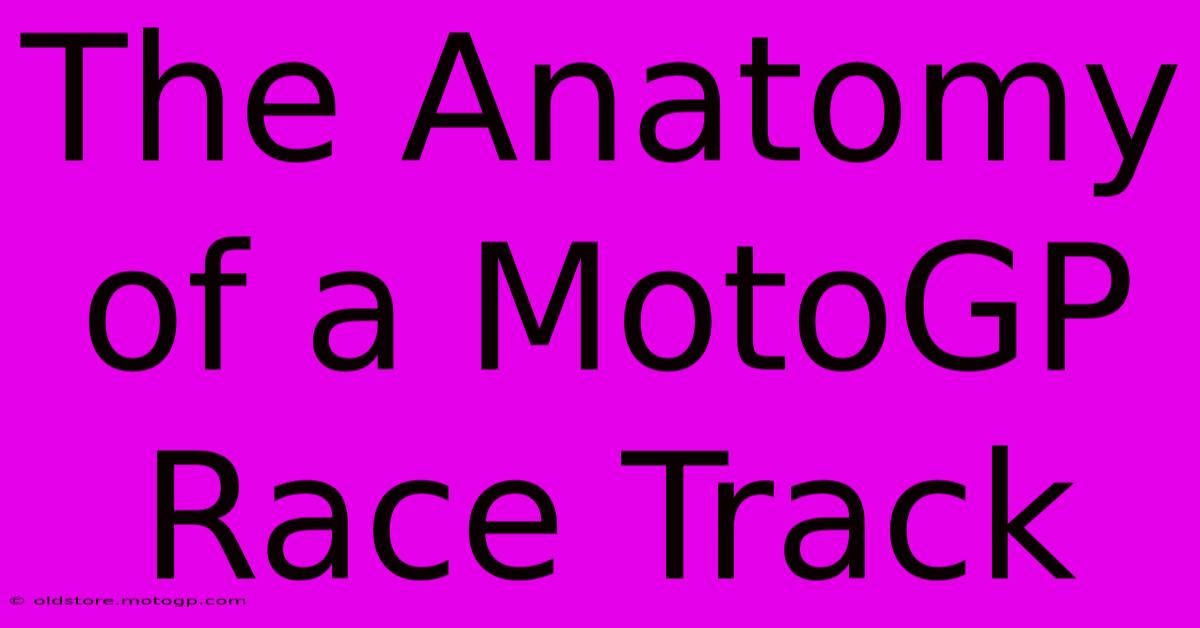The Anatomy Of A MotoGP Race Track

Table of Contents
The Anatomy of a MotoGP Race Track: A Deep Dive into Design and Dynamics
MotoGP, the pinnacle of motorcycle road racing, demands tracks that push riders and machines to their absolute limits. But what makes a MotoGP track so unique? It's not just about speed; it's a complex interplay of design elements, each contributing to the thrilling spectacle we witness every race weekend. This article will dissect the anatomy of a MotoGP race track, exploring the key features and their impact on the racing.
The Essential Elements: More Than Just Turns
A MotoGP track isn't just a circuit; it's a carefully orchestrated sequence of challenging elements designed to test riders' skills and machine capabilities. Let's break down the key components:
1. Turns: The Heart of the Challenge
Turns are the defining features, categorized by their radius and angle:
- Fast Turns: These sweeping bends require high cornering speeds, demanding precise bike control, aerodynamic efficiency, and powerful engines. Think of the legendary Turn 1 at Mugello.
- Slow Turns: These tight corners necessitate significant deceleration and precise throttle control. Successful navigation often relies on rider skill and the bike's agility. The hairpin at the Red Bull Ring is a prime example.
- Blind Turns: Adding an element of surprise, blind turns require riders to rely on their previous experience, track knowledge, and race instincts to choose the correct racing line.
The sequence of turns is crucial. A series of fast turns followed by a hairpin creates an intense rhythm, demanding adaptability and stamina. The transitions between turns are also important, influencing the rider's momentum and the opportunity for overtaking.
2. Straights: Speed and Overtaking
Straights provide opportunities for riders to build speed, crucial for overtaking maneuvers and setting fast lap times. Their length and gradient significantly influence the race dynamics:
- Long Straights: These stretches allow riders to reach maximum velocity, making overtaking attempts more challenging but also more spectacular. The main straight at Silverstone is a perfect example.
- Short Straights: These offer less opportunity for speed build-up but can be important for setting up braking points for subsequent turns.
The placement of straights in relation to turns is vital. A long straight before a tight corner often creates overtaking opportunities as riders try to gain speed advantage before braking.
3. Elevation Changes: Adding Another Dimension
Many modern MotoGP tracks incorporate elevation changes, adding a significant challenge:
- Hills and Valleys: These introduce variables in gravity, impacting braking, acceleration, and cornering forces. The uphill and downhill sections at the Sachsenring are excellent examples. These changes can also impact traction.
Elevation changes make for more dynamic and exciting races, as riders constantly adjust to different track conditions.
4. Run-off Areas: Safety First
Modern MotoGP tracks prioritize rider safety. Run-off areas, typically gravel traps or asphalt, are designed to help riders recover from mistakes. These areas are crucial for minimizing the risk of serious accidents. The size and design of these areas are constantly evaluated and improved based on accident analysis.
5. Pit Lane: The Support System
The pit lane is essential for tire changes, fuel refills, and bike adjustments during races. Its layout and length impact the race strategy, as time spent in the pit lane can cost valuable seconds. Efficient pit stops are essential for successful race strategies.
The Impact of Track Design on Racing Strategy
The overall design of a MotoGP track significantly influences race strategies. A track with many overtaking opportunities may lead to more aggressive racing, while a track with fewer opportunities could lead to more strategic racing. Analyzing the track characteristics beforehand is essential for teams to develop optimal race plans, including tire selection, fuel strategy, and race lines.
Conclusion: A Symphony of Speed and Skill
The anatomy of a MotoGP race track is a fascinating blend of engineering, safety, and the pursuit of thrilling racing. Understanding the interplay of its various elements—turns, straights, elevation changes, and safety features—provides a deeper appreciation for the skill and precision required to compete at the highest level of motorcycle racing. Every track presents a unique challenge, demanding adaptability and precision from both riders and their machines.

Thank you for visiting our website wich cover about The Anatomy Of A MotoGP Race Track. We hope the information provided has been useful to you. Feel free to contact us if you have any questions or need further assistance. See you next time and dont miss to bookmark.
Featured Posts
-
How To Buy A Genuine Motorcycle Helmet Avoid Counterfeits
Feb 26, 2025
-
Motorcycle Racing Fuel Your Passion For Speed
Feb 26, 2025
-
Motorcycle Racing Categories Separating Fact From Fiction
Feb 26, 2025
-
The Ultimate Guide To Moto Gp Austin 2025
Feb 26, 2025
-
Cota Your Guide To The Best Events In Texas
Feb 26, 2025
